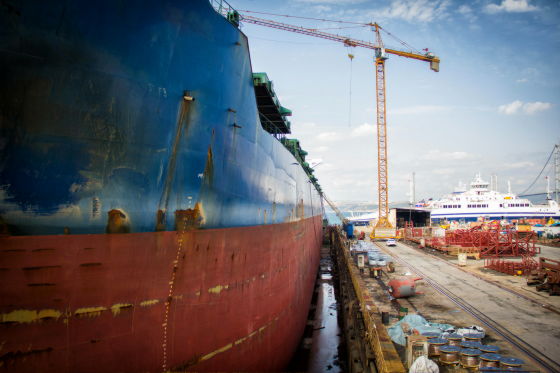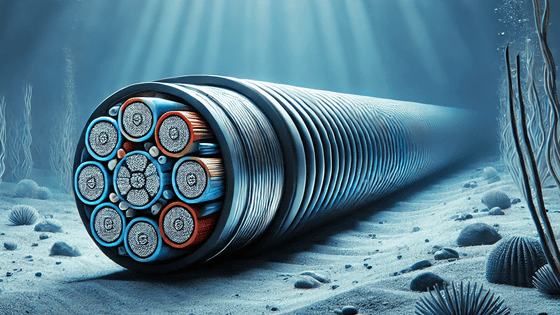Officials are beginning to think that the damage to undersea cables in the Baltic Sea, which was suspected to have been caused by Russian sabotage, was 'more likely an accident after all.'

From 2023 to 2024, undersea cables for power transmission and communications in
Accidents, not Russian sabotage, behind undersea cable damage, officials say - The Washington Post
https://www.washingtonpost.com/world/2025/01/19/russia-baltic-undersea-cables-accidents-sabotage/

The United States and European security agencies have been investigating a series of cable damage incidents in the Baltic Sea over the past dozen or so months, with the understanding that they may be Russian sabotage. At the heart of these investigations are three cases in which Russian ships travelling to and from Russian ports are suspected of cutting undersea cables that supply gas, electricity and internet communications across Northern Europe.
One of these incidents occurred in October 2023 , when the undersea gas pipeline and communication cable in the Baltic Sea connecting Finland and Estonia was damaged by the Hong Kong-registered container ship 'NewNew Polar Bear.' In addition, in November 2024, the Chinese-registered cargo ship 'YI PENG 3' cut the undersea cables connecting Lithuania and Sweden and Finland and Germany, and in December of the same year, the undersea power cable connecting Finland and Estonia was damaged, causing a large-scale outage .
In the December incident, it was reported that the incident may have been caused by the cargo ship 'Eagle S' sailing in the Baltic Sea. Finnish authorities suspect that the Eagle S is a 'shadow fleet,' a clandestine tanker used for oil trading by Russia, which is under sanctions such as restrictions on crude oil exports following its invasion of Ukraine. The Eagle S that was actually seized was apparently carrying about 35,000 tons of unleaded gasoline.
Finland is investigating Russian 'Shadow Fleet' for damage to undersea power cables - GIGAZINE

Russia has denied any involvement in the series of undersea cable damage, but the US and European security agencies have been skeptical of the claims. In November 2024, it was reported that a series of international package explosions across Europe were the work of Russian military intelligence, and were a rehearsal for a plan to cause an explosion on an air cargo flight bound for the US. In July of the same year, it was reported that 'Russia was planning to assassinate the CEO of a major German defense company that produces shells for the Ukrainian military, but US intelligence agencies detected the plan in advance and prevented the assassination from happening.'
Security authorities in European countries have accused Russia of using agents to carry out hundreds of arson attacks, railway disruptions, and small-scale sabotage, and are plotting to divide Europe and reduce support for Ukraine. In this context, the view that the damage to the undersea cables is part of Russian sabotage is growing, and on January 14, 2025, leaders of eight countries, including those in Northern Europe, met in Helsinki, the capital of Finland, and confirmed that they would work with NATO to strengthen patrols in the sea area.
But according to the Washington Post, an investigation involving security agencies from the U.S. and six European countries has found no evidence so far that a ship damaged the cable intentionally or at the direction of the Russian government. Instead, intercepted communications and other classified information suggest that the damage was 'an accident caused by an inexperienced crew aboard a poorly maintained vessel.'
While the investigation is still ongoing and details and witness identities are unknown, U.S. officials believe the 'clear descriptions' of each incident make it likely the damage to the undersea cables was accidental. Officials from two European intelligence agencies agree, and one European official testified that there is 'contrary evidence' that Russia was not involved in the damage to the undersea cables, The Washington Post reported.

However, some are skeptical of the claim that the damage to the undersea cables in the Baltic Sea was merely an accident. Eric Ciaramella, a former US national intelligence officer for Russia, acknowledged that the damage to the undersea cables could have been accidental, but said, 'When you consider that Moscow's intelligence agencies have attempted to assassinate German executives, started fires in factories across Europe, and planted bombs on cargo planes, it's hard to deny that there's a coordinated Russian campaign.'
Pekka Tver, Finland's representative to the European Parliament and former head of Finland's military intelligence, also argued that the damage to the undersea cable was part of a typical hybrid strategy . 'The most important thing in a hybrid strategy is deniability,' he said, noting that while Russian intelligence agencies may not have left evidence that would hold up in court, it is nonsense to conclude that it was an accident based on that alone. Tver and his colleagues cited 'abnormal behavior of the relevant vessels' and 'the fact that the Russian military has been investigating undersea infrastructure for many years' as evidence that Russia was involved in the damage to the undersea cable.
On the other hand, the Washington Post pointed out that targeting the undersea cables of NATO member states could bring scrutiny to Russia's oil smuggling, which is an important source of funding for the country. A Nordic official who was briefed on the Eagle S investigation said, 'We've always assumed that the Shadow Fleet ships were in poor condition, but this was even worse than we expected,' testifying that the tanker was in very poor condition.
European security officials say they believe it may be difficult to say with complete certainty that Russia was not involved, although Finland's main intelligence agency also believes the December 2024 incident was an accident. A spokesman for the Finnish National Investigation Agency, which is leading the Eagle S investigation, said: 'The investigation is still ongoing and it is too early to draw any final conclusions about the cause of the damage or the contributing factors.'
Related Posts:
in Note, Posted by log1h_ik







